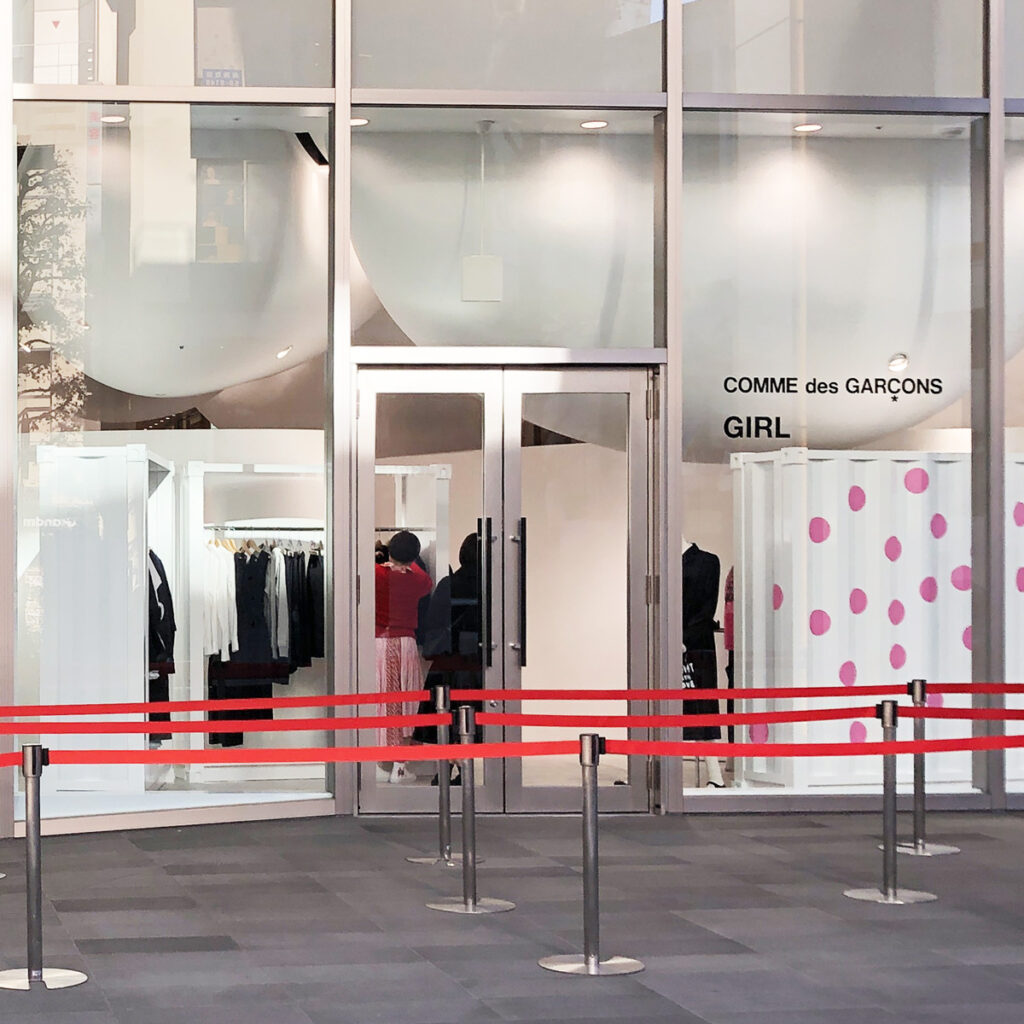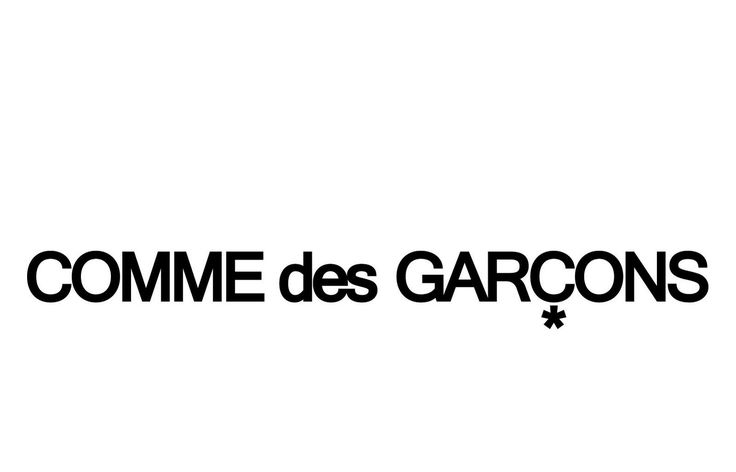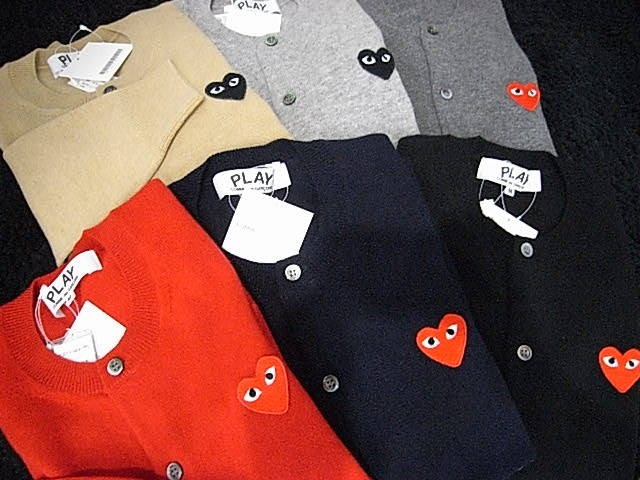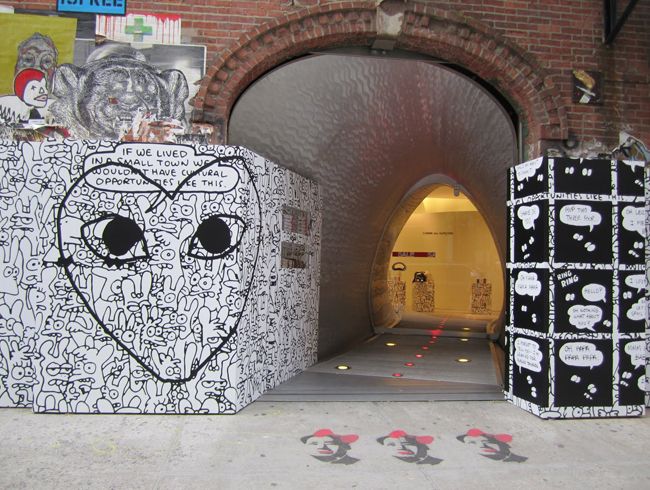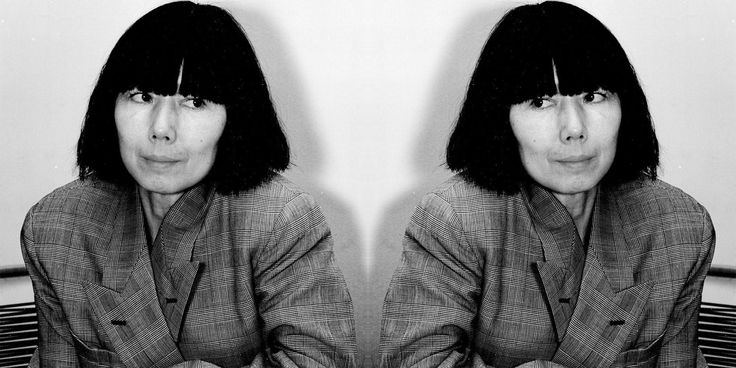Introduction: Where Avant-Garde Fashion Meets Dutch Design
The Netherlands has always been a place of innovation – a nation where design, architecture, and art flourish on radical experimentation. It is not surprising then that Comme des Garçons, the Japanese fashion of iconic avant-garde and conceptual consideration, has taken its enthusiastic audience here.
The introduction of Comme des Garcons to the Netherlands, particularly with its Dover Street Market Amsterdam branch, heralded a meeting of Japanese minimalism and Dutch modernism cultures. They combine, in a unity, into a conversation between functionality and expression, art and business, tradition and revolution.
Travelling through the presence of Comme des Garçons in the Netherlands is to understand how fashion can be philosophy – and how an extreme vision on the part of a single designer can have a ripple effect in the most inventive of European cities.
Rei Kawakubo: The Creative Force Behind Comme des Garcons
Redefining Fashion as Art
Comme des Garçons (CDG) is built around its founder, one of the most influential designers of the 20th and 21st centuries, Rei Kawakubo. Kawakabo has, since her time in Tokyo in 1969, taken fashion beyond aestheticism, making clothes not only to be conceptual statements on identity, perfection, and the human figure.
Her trends are not her work but her philosophy. Kawakubo challenges the standards of beauty, gender, and form and reinvents them in a different form. Her collections have been characterized as dressable art or a sculptural style of fashion, whereby the intention is not to beautify the body but to provoke the eye.
The Philosophy of “Creation, Not Reproduction”
Kawakubo has a mantra: creation, not reproduction, which explains her insatiable need to achieve originality. Each collection Comme des Garçons considers the theme of contradiction – destruction and rebirth, chaos and order, abstraction and emotion.
This style is very much in keeping with the Dutch creative tradition, which cherishes conceptualism and modernist design. Designed by Rem Koolhaas and surrealistic like M.C. Escher, the Netherlands has never lacked in glorifying radical imagination, and as such, Kawakubo’s artistic ideology is a perfect fit there.
The Arrival of Comme des Garcons in the Netherlands
A European Expansion Rooted in Culture
Although Comme des Garcons had been an influential brand in other global fashion cities such as Paris, London, and Tokyo, its entry into the Netherlands marked a calculated entry into a market characterized by creativity and design literacy.
Minimalism in architecture and functional beauty was a historical value held by Dutch consumers, which is highly reflective of the aesthetic of Comme des Garçons. Amsterdam and Rotterdam essentially are mirror images of the contemporary reserve and creative latitude represented by the universe of CDG, with its clean lines and experimental architecture.
Dover Street Market Amsterdam: A Creative Landmark
The Dover Street Market Amsterdam (DSM Amsterdam) opening allowed exposing the Dutch population to the brand Kawakubo, in its peculiar way of retailing, which is a mix of an art gallery, concept store, and cultural curatorium in one.
DSM Amsterdam is situated in one of the most dynamic design cities in Europe, which represents both the creative spirit of Kawakubo and the Dutch receptive spirit to new ideas. The interior design of the store is based on industrial minimalism, which makes it of metal, glass, and organic materials, forming a fluid architectural space that varies with seasons.
As with the flagship locations of the brand in London, Tokyo, and Singapore, DSM Amsterdam is not only a commercial venue but a space of collaboration, creativity, and discourse.
Inside Dover Street Market Amsterdam
A Space Where Fashion Becomes Experience
Dover Street Market Amsterdam is like entering a shifting exhibition as one walks through it. The environment is created by Rei Kawakubo herself – a combination of sculptural installations, conceptual works of art, and avant-garde fashion shows.
All parts of the store are regarded as their own universe. Walls move, textures alter, and collections are also rearranged to display the belief of Kawakubo in transformation. What comes out is an experience that evokes curiosity and thought rather than the shopper’s behavior.
Brands and Collaborations
DSM Amsterdam displays the entire spectrum of Comme des Garcons lines, the main collection, Comme des Garcons Homme Plus, CDG SHIRT, Comme des Garcons PLAY, and Comme des Garcons Parfum.
Also with these, the store carries brands that have a similar creative DNA to Kawakubo, including Craig Green, Marine Serre, Loewe, Rick Owens, and Maison Margiela. Regular partnerships such as CDG x Nike, CDG x Converse, and CDG x Supreme ensure that the store retains a permanent relevance in the high fashion and streetwear circles.
A Cultural Meeting Point
Similar to many of its peers worldwide, Dover Street Market Amsterdam is a cultural ecosystem. It attracts artists, designers, and musicians across Europe and establishes a discourse across disciplines. Exhibitions, pop-up environments, and seasonal themes provide the space with movement and progressive thinking.
Comme des Garcons Lines Popular in the Netherlands
1. Comme des Garcons Main Line: The Artistic Core
The core line of Comme des Garcon worn in restricted numbers at DSM Amsterdam is the most appropriate conceptual work of Rei Kawakubo. Each of the collections – frequently premiered in Paris – addresses the concepts of change, renewal, and feeling using both materialized and shaped form.
The abstract works appeal to the Dutch audiences who love to be touched by the depth of the art and the innovation of the designs that mix the boundaries between fashion, architecture, and philosophy.
2. Comme des Garcons Homme Plus: Redefining Menswear
Homme Plus collection is a redefinition of masculinity by Kawakubo. Organized but loose, the garments combine tailoring with some aspects of performance and play. Homme Plus represents the freedom of expression by clothing in the Netherlands, which is a country known to have a progressive culture and an open mind.
3. CDG SHIRT: Minimalism for the Modern Urbanite
The CDG SHIRT line makes the intellectual design of Kawakubo more accessible to the wearable one. This collection of crisp cotton shirts, meticulously crafted flavor, and deconstructed finishes will address the demands of the urban workers and design followers of Amsterdam who appreciate crafts and individuality detail.
4. Comme des Garcons PLAY: The Symbol of Accessible Creativity
The most publicly visible manifestation of the CDG fashion in the Netherlands is perhaps the Comme des Garcons PLAY line, in which the heart-with-eyes logo by Filip Pagowski is used, and which symbolizes the light-hearted and friendly side of the brand.
CDG PLAY T-shirts, hoodies, and Converse sneakers are now basic elements of Dutch street style that are artistic identity and wearable at the same time.
5. Comme des Garcons Parfum: Scent as Concept
Another very important element of the Dutch presence of Comme des Garcons Parfum is the presence of Comme des Garcons perfume. These perfumes (including CDG 2, Black, and Wonderwood) are sold at Dover Street Market Amsterdam or in selected boutiques as they are disruptive towards the traditional style of perfumery, with surprising notes and unique packaging.
These perfumes are intellectual luxury to the Dutch consumers, thought-provoking, experimental, and long-lasting.
The Intersection of Dutch and Japanese Design Philosophy
Shared Minimalism and Function
Japanese and Dutch design might appear to be highly different at first sight. Nevertheless, they have deep common characteristics, clean lines, practicality, and emotionality.
Minimalism in Hollan, with its Bauhaus and industrial effect, is a complement to the conceptual approach of Rei Kawakubo that glorifies imperfection and abstraction in Japan. The two traditions believe in clarity in form, and both perceive designing as an extension of thought.
Innovation Through Contrast
The open, democratic attitude toward creativity that is practiced in the Netherlands is an interesting contrast to the controlled chaos of Kawakubo. But this is now a tension, between discipline and disruption, which makes a fruitful ground of innovation.
It is this common ideology of progress and experimentation that makes Comme des Garçons Netherlands a perfect match culturally. Not only fashion but also an intra-discourse of design and identity.
The Cultural Impact of Comme des Garcons in the Netherlands
Elevating the Local Fashion Discourse
Comme des Garçons’ presence in Amsterdam has made the fashion discussion in this city a creative one rather than a consumerist one. Rei Kawakibo has been a frequent inspiration to Dutch designers and fashion students, learning her deconstruction, layering, and narrative techniques.
The design principles of CDG are discussed in the Fashion academies of Arnhem and Amsterdam in connection with the form, identity, and politics of clothing. This intercultural interaction adds to the already rich creative environment in the Netherlands.
Inspiring a New Generation
When it comes to Dover Street Market Amsterdam, young Dutch designers are exposed to the world of avant-garde aesthetics. The curatorial style used by the store encourages them to look past trends – to consider fashion as an experimental tool.
Since the legacies of Kawakubo can be traced not only in clothing but in attitudes as well, they can make the new generation fearless about creating.
Comme des Garcons and the Future of Dutch Fashion
Sustainability Through Longevity
Comme des Garçons has a strong design philosophy with its slow and deliberate approach to fashion in the times of fast fashion. The eternal lines of the brand and high quality of its edifice are in line with the increasing Dutch interest in sustainability and eco-friendly production.
The imperative of meaningful creation rather than mass production comes as a direct response to a generation that desires genuineness in both looks and content in their creation.
Expanding Artistic Collaboration
Since the Dutch fashion scene is still developing, the implementation of Comme des Garçons could into lead more Japanese and Dutch artists, designers, and architects to collaborate. Dover Street Market Amsterdam will easily emerge as a platform where artists, sound, fashion, and technology intersect.
Conclusion: The Netherlands as a Canvas for Comme des Garcons
Culturally, the Comme des Garçons of the Netherlands is a tale of harmonious existence in that the Japanese avant-garde design collides with the Dutch innovation. Rei Kawakubo has developed much more than a store through Dover Street Market Amsterdam: a living gallery of ideas.
Under this artistic collaboration, the framework is given by the Netherlands, and the heart by Comme des Garçons. They all demonstrate that fashion can even be intellectual and emotional, global and personal.
With Rei Kawakubo still on her path of creation, rather than repetition, her art in the Netherlands is a reminder that the art of fashion has no boundaries, but possibilities.


